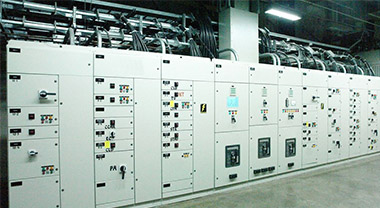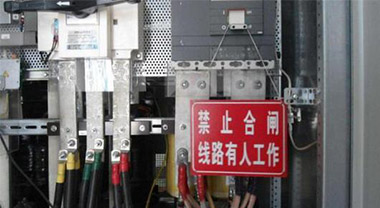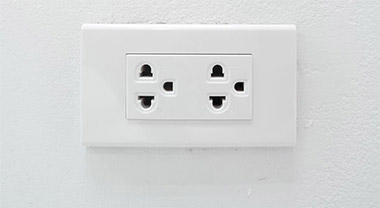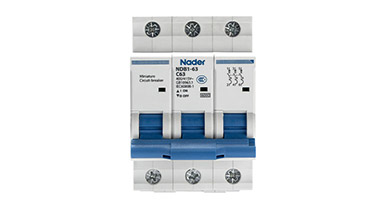Precautions for safe operation of circuit breakers
The circuit breaker is a very important switchgear. Its normal operation directly affects the safe operation of the power grid and electrical equipment. Therefore, the operation and maintenance of the circuit breaker must be strengthened to ensure that its performance is intact. In order for the circuit breaker to operate safely and reliably, the following points must be done:
(1) The working conditions of the circuit breaker must meet the operating conditions specified by the manufacturer, such as altitude, ambient temperature, relative humidity, etc. must meet the requirements.
(2) Various high-voltage circuit breakers should be operated for a long time according to the rated parameters specified on the nameplate of the circuit breaker. During normal operation, the working current and maximum working voltage of the circuit breaker shall not exceed the specified value. The short-circuit current of the system at the installation location of the circuit breaker must not exceed the rating on the nameplate of the circuit breaker. When the circuit breaker passes the short-circuit current, it should meet the dynamic stability and thermal stability conditions.
(3) In order to make the circuit breaker in operation work normally, no matter what kind of operating mechanism the circuit breaker adopts, it should ensure that its operating energy is complete and reliable, and the operating mechanism performance is intact. For pneumatic or hydraulic operating mechanisms, the working pressure should be Within the specified range.
(4) Clarify the allowable opening and closing times of the circuit breaker to ensure a certain working life. According to the standard, circuit breakers generally have a certain number of no-load opening and closing times (also known as mechanical life). In order to extend the overhaul period of the circuit breaker, the circuit breaker also specifies the number of times (also known as electrical life) that allows continuous opening and closing of short-circuit current or load current. The number of tripping of the circuit breaker should be counted in time. When the circuit breaker reaches the specified number of accidental openings, it should be powered off for maintenance. Under normal circumstances, it is prohibited to continue to put into operation the circuit breaker that exceeds the specified number of breaking times.
(5) The operating temperature of various circuit breaker bodies and lead joints, etc. should not exceed the allowable value. The wiring board and lead joints connected to the circuit breaker should be in good and reliable contact, and there should be a temperature indicating wax to monitor the operating temperature. Prevent circuit breaker accidents caused by overheating of contact parts. The oil temperature of the oil circuit breaker should also be monitored to prevent the oil temperature from becoming too high.
(6) It is forbidden to put into operation circuit breakers with abnormal conditions such as refusal to open or close defects, serious oil shortage, oil leakage, gas leakage, and unqualified insulating medium.
(7) Check the simultaneity of circuit breaker closing. It is strictly forbidden to put into operation the circuit breaker with unqualified operating speed, synchronization and tripping time.
(8) The circuit breaker should be equipped with opening and closing position indicators so that the operator can check the actual position of the circuit breaker when it is opened or closed during operation or inspection. The position indicator should be easy to observe and the indication should be correct.
(9) Operators should pay attention to the status of auxiliary contacts. If it is found that the contacts are twisted or loose on the shaft or the fixed contacts are detached from the turntable, emergency repairs should be made.
(10) Insulation resistance can reflect the insulation defects of circuit breakers. The insulation resistance values of circuit breakers of various voltage levels and types have specific regulations. Before putting it into operation, the insulation resistance should be measured. When measuring, the insulation resistance of the conductive part to the ground should be measured in the closed state, and the insulation resistance between the fractures should be measured in the open state. The insulation resistance of various circuit breakers must meet the regulations before they can be put into operation.
(11) The metal shell and base of the circuit breaker should have obvious grounding signs and be reliably grounded. The cross-sectional area of the grounding wire must meet the requirements of safety regulations;
(12) When the circuit breaker is in the following situations, measures should be taken to stop it for maintenance.
1) The oil circuit breaker smokes, catches fire, sprays a lot of fuel, the fuel tank blasts, or there is a bursting discharge sound inside.
2) The oil circuit breaker has serious oil leakage, the oil level is not visible, or the oil quality has deteriorated.
3) The SF6 circuit breaker is seriously leaking and sends out an operation lock signal.
4) The hydraulic operating mechanism is seriously leaking, and the oil pressure is very low to send out a lock signal.
5) Vacuum damage to the vacuum circuit breaker.
6) The air pressure of the compressed air circuit breaker is too low and cannot be maintained.
7) Overheating, discharging and melting at the junction of the circuit breaker terminal and the connecting wire.
8) The casing and insulator are broken, the wire is burned or deformed, and the mechanism is displaced.




